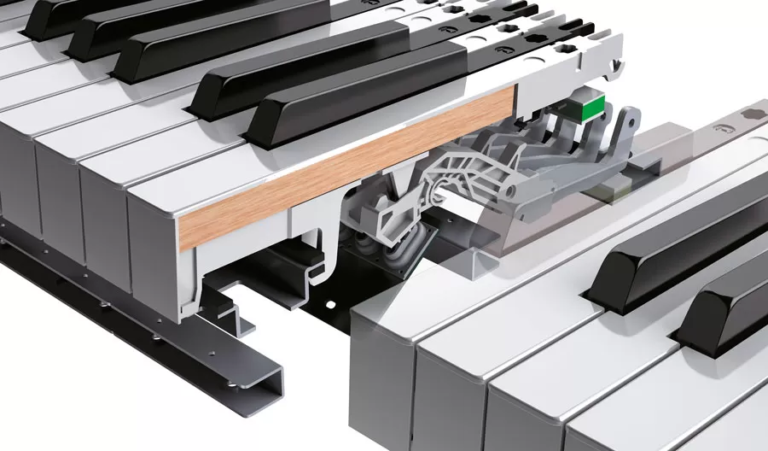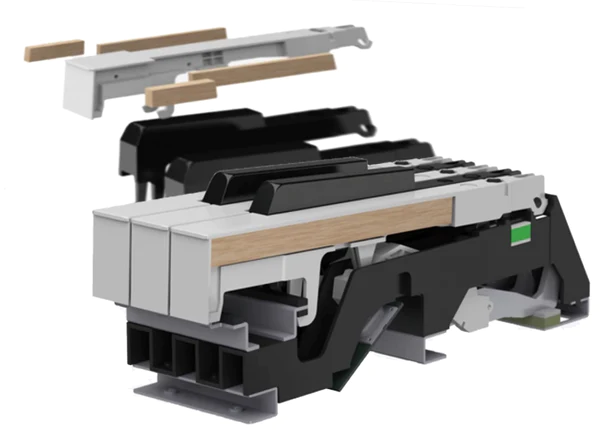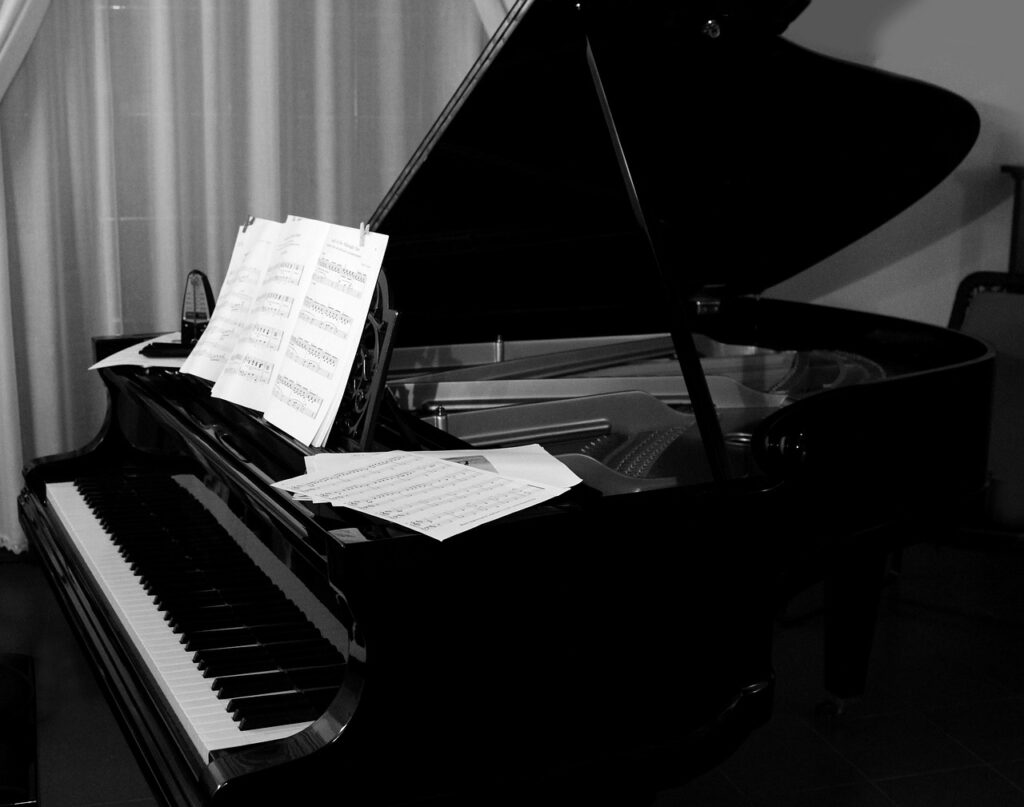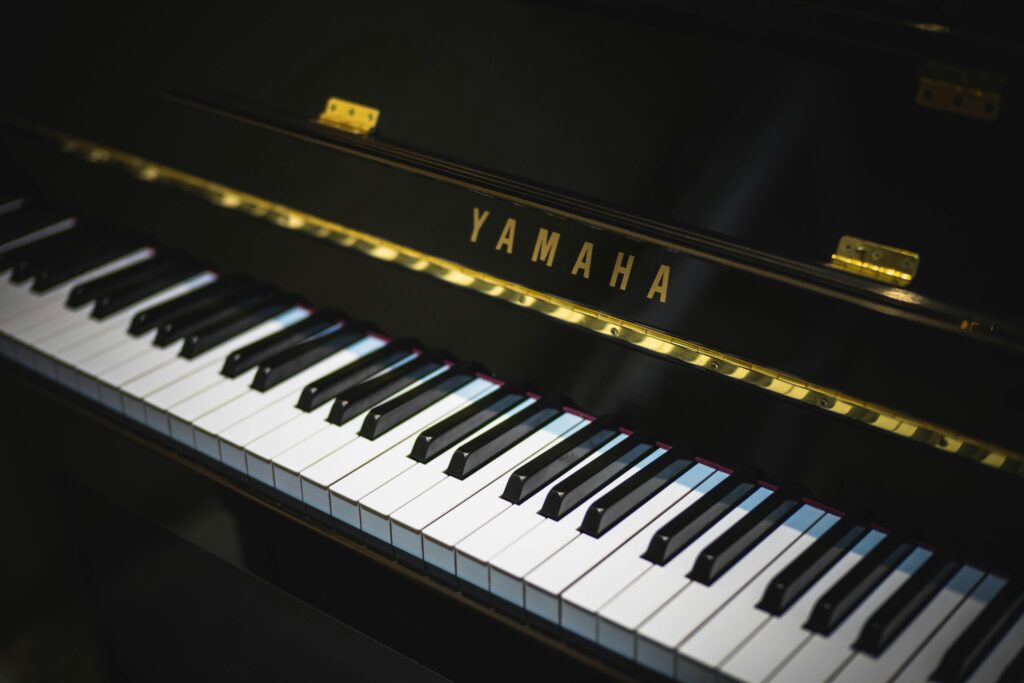When it comes to playing the piano, the type of keys you choose can significantly influence your musical experience. Should you go for weighted keys or touch-sensitive ones? This decision can shape how you feel and connect with the music you create.

In this article, we’ll delve into the various types of keys found in keyboards and digital pianos. By unraveling the unique features of each type, we aim to provide you with the knowledge needed to make an informed decision. Whether you’re an experienced pianist seeking the feel of an acoustic piano or a beginner looking for a more accessible experience, this guide will help you find the perfect match for your style and musical preferences. Let’s dive into the world of digital piano keys!
Different Types of Keys in Digital Pianos
The type of keys on your digital piano is a crucial factor in shaping your playing experience. Keys range from basic, non-sensitive ones to advanced hammer-action mechanisms. Let’s explore each type and its characteristics in detail to help you select the right digital piano.
Non-Sensitive Keys
Non-sensitive keys, often referred to as “organ-style keys,” are the least realistic when compared to acoustic pianos. These keys do not respond to the force of your touch, meaning the volume remains the same regardless of how hard or soft you press. They’re suitable for music styles where dynamics are less critical, such as electronic or pop.
Advantages
- Durability: Highly resistant to wear, ideal for intensive practice or educational settings.
- Simplicity: Perfect for beginners, as they eliminate the complexity of touch sensitivity.
- Affordability: Pianos with non-sensitive keys are budget-friendly, making them accessible to a wide range of users.
Disadvantages
- Lack of Expression: The absence of touch response limits dynamic expression in music.
- Less Realistic Feel: They do not replicate the tactile experience of playing an acoustic piano.
Touch-Sensitive Keys
Touch-sensitive keys, also known as “velocity-sensitive keys,” respond to the force of your touch by adjusting the volume accordingly. While they offer more expressiveness than non-sensitive keys, they lack the weighted resistance of acoustic piano keys.
Advantages
- Musical Expression: Enable control over dynamics and nuance in your playing.
- Versatility: Suitable for a variety of musical genres, from classical to pop and jazz.
- Beginner-Friendly: Encourage the practice of dynamics, essential for expressive performance.
Disadvantages
- Limited Realism: Do not replicate the resistance of acoustic piano keys, which might not satisfy advanced players.
- Technical Limitations: May hinder advanced techniques compared to weighted keys.
Semi-Weighted Keys
Semi-weighted keys offer a greater degree of resistance than touch-sensitive ones, providing a more realistic playing experience. While not as authentic as fully weighted keys, they strike a balance between cost and functionality, making them ideal for intermediate players.
Advantages
- Improved Technique: The added resistance aids in developing better finger strength and control.
- Versatility: Suitable for a broad range of musical styles and genres.
- Moderate Realism: Provide a more authentic tactile response compared to touch-sensitive keys.
Disadvantages
- Not Fully Realistic: While more authentic, they still fall short of replicating an acoustic piano feel.
- Personal Preference: Some players may find them less satisfying than fully weighted keys.
Fully Weighted or Hammer-Action Keys
Fully weighted keys, also called “hammer-action keys,” mimic the resistance and response of an acoustic piano. They feature a graded weight, where lower keys feel heavier and higher keys feel lighter, replicating the feel of a traditional piano. These are ideal for advanced students and pianists aiming for high performance.
Advantages
- Realistic Feel: Closely simulate the tactile experience of an acoustic piano.
- Technical Development: Promote proper technique and expressive playing.
- Preferred by Classical Pianists: Excellent choice for those who value authenticity.
Disadvantages
- Increased Effort: Require more finger strength, which may be challenging for beginners.
- Heavier Build: Tend to be larger and heavier, making transport and storage more difficult.
Hammer-Action Keys
Hammer-action keys represent the pinnacle of digital piano key realism. They replicate the hammer mechanism of an acoustic piano, providing the closest experience to playing a grand piano. This includes the graded weight and the tactile sensation of a hammer striking a virtual string.

Advantages
- Unmatched Realism: Offer a playing experience nearly identical to an acoustic grand piano.
- Expressive Control: Allow for precise dynamic control and nuanced playing.
- Preferred by Professionals: Perfect for advanced musicians seeking the highest quality.
Disadvantages
- Physical Effort: Can be physically demanding during extended practice sessions.
- High Cost: Typically more expensive than other key types.
Conclusion
Choosing the right keys for your digital piano is an essential step in finding the perfect instrument for your musical journey. Each key type offers unique benefits and trade-offs, catering to different skill levels and musical preferences.
- Non-Sensitive Keys: Best for beginners on a budget or musicians focusing on specific genres like electronic music.
- Touch-Sensitive Keys: Provide an expressive experience suitable for beginners and intermediate players.
- Semi-Weighted Keys: Offer a balance of realism and affordability, ideal for students progressing in their piano studies.
- Fully Weighted Keys: Preferred by advanced players for their authentic feel and technique-building potential.
- Hammer-Action Keys: The ultimate choice for professionals and those seeking the closest experience to an acoustic piano.
The key to making the right decision lies in trying out different options and determining which type feels most natural and inspiring for your playing style. A well-chosen digital piano can elevate your practice and performance, allowing you to explore your musical potential to its fullest.



